While mice may not be everyone’s cup of tea, these teeny tiny animals can be quite adorable! Pet mice come in many shapes and sizes. Just as well, there are many species of very cute mice found in the wild that cannot really be raised as pets.
Let’s explore a few key questions about cute mice and break down 10 different types of cute mice. Some of these adorable mice on our list are ideal for keeping as pets, while others should be enjoyed out in the wild where they belong.
Are Mice Cute?
The question of whether mice are cute or not is a personal one that mostly depends on personal opinion. While some may think mice are adorable and cute, others may view them as pests and disease-carrying animals. It is crucial to understand that a range of factors, such as cultural background, individual experiences, and exposure to media depictions, influence how we view mice (and everything else).
Mice have certain physically endearing traits, at least from a biological perspective. They have petite, delicate features, silky fur, and big, expressive eyes. These characteristics are often linked to cuteness and might cause some people to feel all warm and fuzzy inside. Others, however, can find the same characteristics of mice to be disturbing or repulsive.
It is also important to take into account the environment in which mice are found. For example, mice kept as pets and reared for company may be thought of as cute by their owners who have developed emotional ties to them. On the other hand, mice that intrude on human living areas and are considered pests may be viewed as annoyances rather than adorable animals.
In the end, it comes down to individual taste as to whether or not mice are cute. While some might think they’re cute and sweet, others can see them as unwelcome vermin. Regardless of whether we think they are adorable or appealing, it is vital to remember that all creatures deserve to be treated with respect.
Can Mice Be Cuddly?
Because of their tiny size and timid demeanor, mice are not typically seen as cuddly pets. Mice can be handled as pets and be shown attention, although they might not be as open to physical touch as other larger pets like cats and dogs.
That being said, some mouse breeds like the fancy mouse have undergone selective breeding to improve their gentle and sociable nature. It’s possible that these mice have a stronger propensity for social connection and prefer being held and touched.
Just as well, a pet mouse can get more used to physical touch by their owners developing a deep relationship with them through frequent handling and positive rewards. This can entail engaging with the mouse while giving them treats or praise and letting them explore their surroundings at their own speed.
Although mice can be trained to tolerate handling, it is vital to keep in mind that they may still be vulnerable to unexpected movements. Mice can be easily startled! Therefore, it’s critical to handle them delicately and carefully to prevent harm or excessive stress.
In conclusion, even though mice aren’t typically thought of as cuddly pets, it is nevertheless possible to bond with them and enjoy moderate physical touch. It’s crucial to handle and engage with mice in a gentle and calm manner while still respecting the creatures’ own preferences and boundaries. It is possible to establish a solid and satisfying bond with a pet mouse with time and encouragement.
Can Mice Be Friendly?
Yes, mice make very friendly pets. Mice that have been deliberately selected for their docile and amiable temperaments, like the fancy mouse, are more gregarious and receptive to human interaction. Mice are generally clever creatures that, with the right care and consideration, can develop close relationships with their owners.
Giving a pet mouse a cozy and engaging habitat, regular socialization opportunities, and positive reinforcement all go a long way toward fostering a loving bond. This can entail petting them gently and regularly, giving them toys and things to do, and showing them love and attention as a way to promote good behavior.
It’s crucial to keep in mind that mice, like other creatures, have unique personalities and preferences of their own. While some mice may be more fun and outgoing by nature, others could be more cautious and reserved. Each mouse should be treated as an individual, and their own boundaries and comfort zones should be respected.
It’s crucial to conduct your homework and get a grasp on the obligations of keeping a pet mouse if you’re thinking about buying one. This could entail giving them an appropriate enclosure, regular nutritious meals, and suitable veterinary treatment. It’s also critical to confirm that your living arrangements permit the appropriate and safe care of a pet mouse.
In conclusion, if given the right care and attention, mice may become amiable and social pets. A deep and satisfying attachment can be developed with a pet mouse by giving it a stimulating and cozy habitat, regular socializing, and positive reinforcement. Now, let’s get into 10 different very cute types of mice!
1. Fancy Mouse
Species: Mus musculus domestica
A fancy mouse is a domesticated variety of the common house mouse, one of the numerous mouse species that are commonly kept as small pets. Additionally, fancy mice have been developed specifically for exhibitions, and fancy mouse show events are conducted all over the world. In comparison to more expensive pets and even many other pet rodents, a fancy mouse is very affordable. Fancy mice normally only live for two to three years, which is a rather short lifespan that could turn some potential pet owners off. These mice are renowned for their adorable tiny faces, as well as for the variety, color, and style of their hair. A fancy mouse can have pink or black eyes, depending on its fur color.
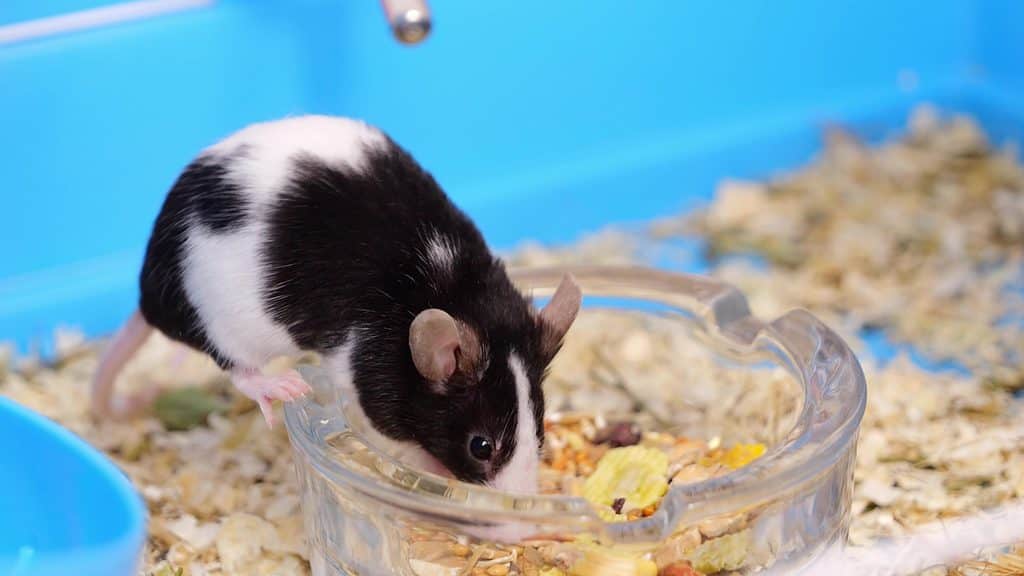
Fancy mice (pictured) is the most common type of cute mouse kept as pets.
©myschka79/Shutterstock.com
2. House Mouse
Species: Mus musculus
Although many people consider this kind of mouse to be a pest, there’s no denying how adorable they are. The house mouse is a tiny mammal belonging to the Rodentia order. It is distinguished by its long, nearly hairless tail; big, rounded ears; and pointed nose. It belongs to the species of the genus Mus that is most widespread. Even though it is a wild animal, the house mouse has greatly profited by living close to humans. As a result, completely wild populations are far less frequent than semi-tame ones close to human populations. Typically, they only reach a length of four inches with their tails and a weight of one ounce.
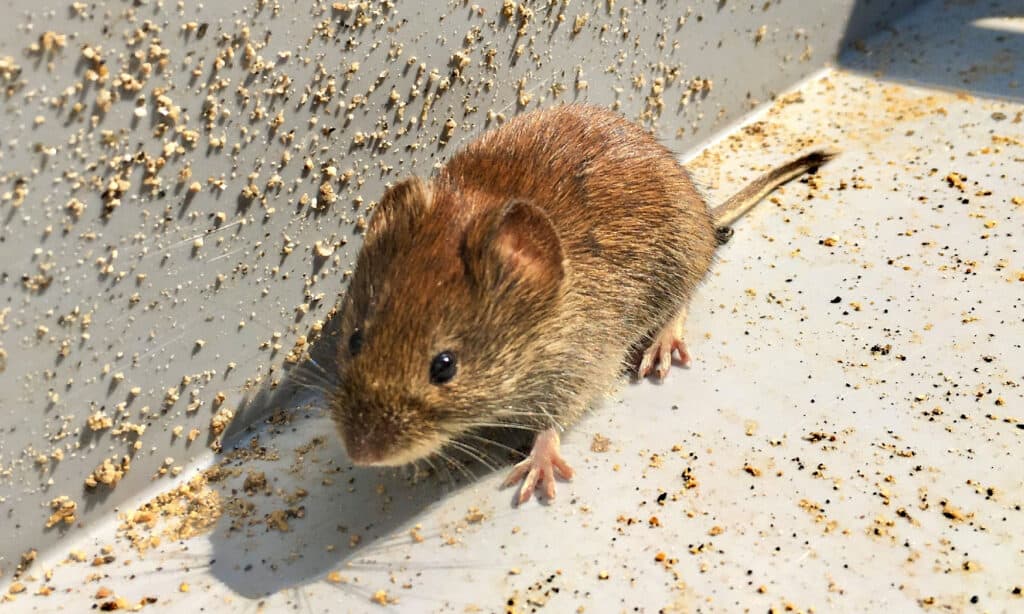
The house mouse (pictured) is often seen as a pet, though it is still quite cute!
©iStock.com/Bruno_il_segretario
3. Spiny Mouse
Species: Acomys genus
Any species of rodent belonging to the genus Acomys is referred to as a spiny mouse, though there are many species of spiny mice within the genus. Spiny mice are tiny animals with naked, scaled tails that resemble mice of the genus Mus. However, they have guard hairs on their coats that are particularly stiff and resemble hedgehog spines. As a result, they go by the common moniker spiny mouse. These cute mice have wide, endearing ears and large, expressive black eyes. Genetic data shows that African spiny mice may be more closely related to gerbils than to ordinary mice, despite their anatomical resemblance to Mus species. Despite having their origins in the African deserts, African spiny mice are often maintained as exotic pets across the globe, especially in Western countries like the United States.

The spiny mouse (pictured) is loved for its cute, large, expressive eyes.
©Alexander Baluev/Shutterstock.com
4. Zebra Mouse
Species: Lemniscomys genus
Zebra mice, also known as striped grass mice, are any species of mouse found within the Lemniscomys genus. Sub-Saharan Africa is home to the majority of zebra mouse species. They typically inhabit grassy areas. However, there may be some environmental distinctions where the distribution of several species overlaps. These mice can grow to be fairly large, up to 11 inches long when their tails are included. They only have a maximum weight of roughly two-and-a-half ounces. These really cute mice are distinguished by the zebra-like stripes on their coats. Although they are typically nocturnal, certain species can be diurnal. These mice eat vegetation in addition to the occasional insect. The IUCN considers several species of this mouse to be vulnerable, thus they cannot be kept as pets.
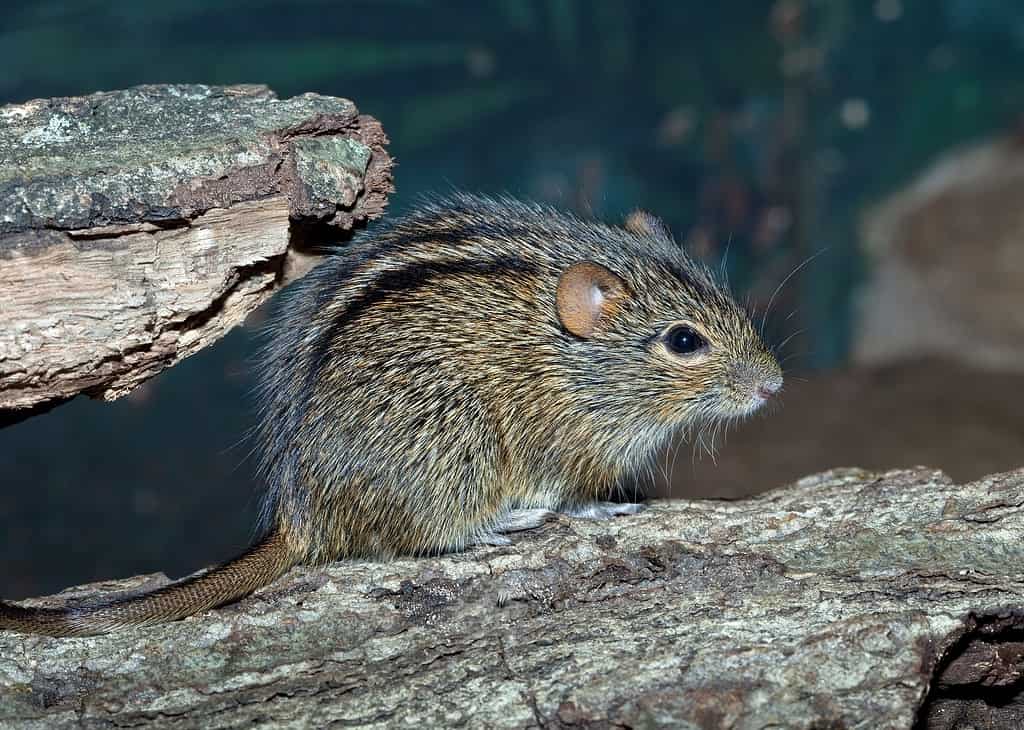
The adorable zebra mouse (pictured) is notable for its adorable stripes in its fur.
©David W. Leindecker/Shutterstock.com
5. Natal Mouse
Species: Mastomys natalensis
The natal mouse is also known as the common African rat or the Natal multimammate mouse. South of the Sahara, Africa is home to these adorable mice. Six distinct genetic groups can be identified in various geographical locations. Its natural habitats include subtropical or tropical dry forests, lowland forests, savannas, shrubland, arable land, pastureland, rural gardens, urban areas, and more. These mice often inhabit African villages and have strong human associations. They have very intelligent personalities and are generally odorless. Natal mice are also considered to be very social pet mice as well. Although many of these mice are kept as pets, the majority are employed as laboratory mice.
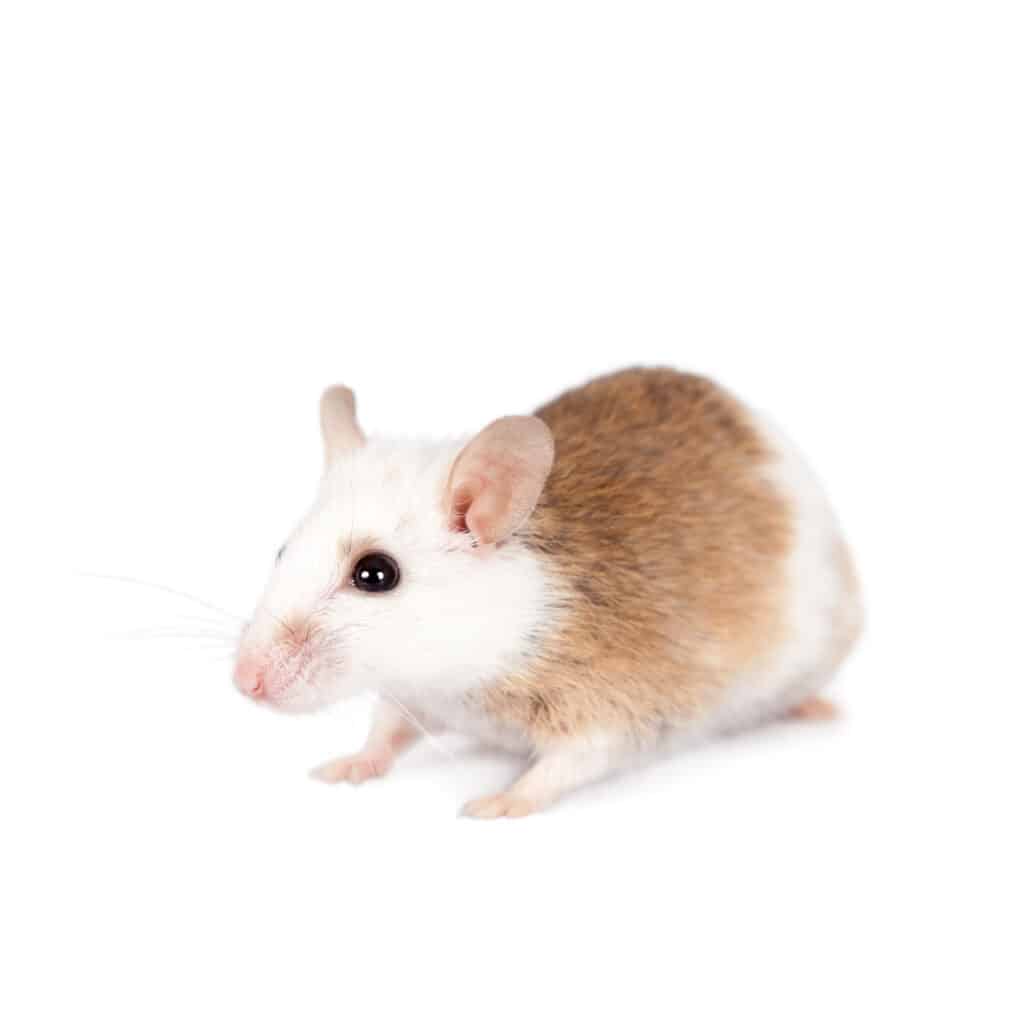
The natal mouse (pictured) is a cute pet mouse known for being very intelligent.
©Rosa Jay/Shutterstock.com
6. African Dwarf Mouse
Species: Mus minutoides
The African dwarf mouse is also known as the African pygmy mouse. The African pygmy mouse is one of the smallest rodents in the world. In addition to being common in sub-Saharan Africa, it is also kept as a pet elsewhere in the world. It belongs to the vast superfamily Muroidea, which has over 1000 distinct species, much like the ordinary house mouse. These adorable tiny mice weigh less than an ounce and have a tail length of just around three inches. They are distinguished by their brownish or greyish fur and their pale bellies. Additionally, they have very cute triangular ears. African pygmy mice are skilled climbers and dwell in groups or couples on grass near bodies of water.
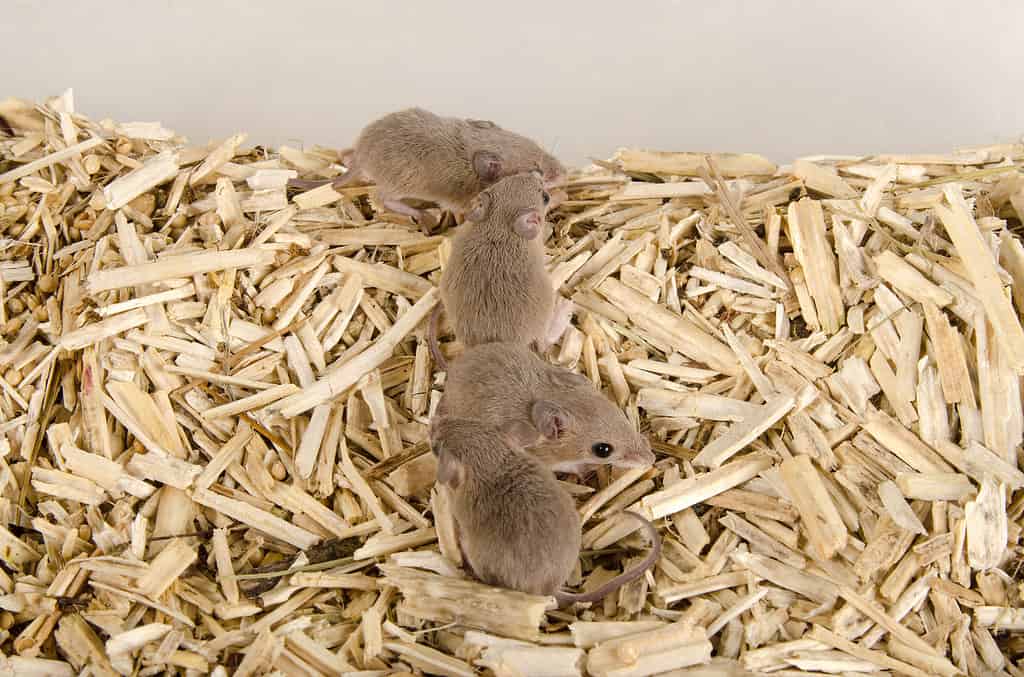
African dwarf mice (pictured) are extremely cute mice that can be kept as pets, but do best in groups.
©Chorch/Shutterstock.com
7. Harvest Mouse
Species: Micromys minutus
Harvest mice are so cute with their very round, tiny ears! Small rodents from Asia and Europe make up the harvest mouse species. Reed beds, other tall ground vegetation such as long grass and hedgerows, and fields of cereal crops like wheat and oats are common places to find this species. It has reddish-brown fur with white underparts and a bare, very prehensile tail that it employs for climbing. The tiniest rodent in all of Europe, an adult can be as little as 0.14 ounces. It consumes fruit and nectar in addition to seeds and insects. Due to their tiny size, ease of care, minimal maintenance needs, and ability to be kept in groups, these rodents are often kept as absolutely adorable pets.
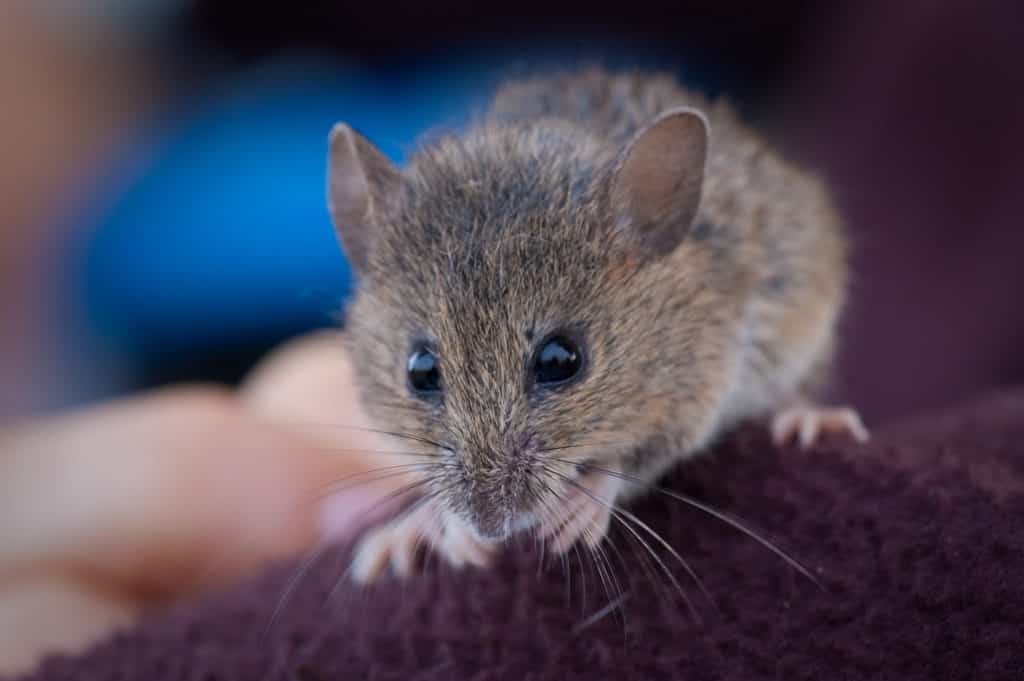
The harvest mouse (pictured) is a teeny tiny cute mouse that is very good at climbing.
©Pacific Southwest Region USFWS/CCBY2.0 – License
8. Wood Mouse
Species: Apodemus sylvaticus
Now this is one adorable wild mouse species! A murid rodent, the wood mouse is indigenous to Europe and northwest Africa. It is closely related to the yellow-necked mouse but varies in that it lacks the yellow fur band around the neck, has somewhat smaller ears, and is often a little bit smaller overall, measuring around three and a half inches long and weighing three-quarters of an ounce. This is a widespread species that can be found in the majority of Europe. It coexists with people and is occasionally seen as a pest. Even though it is not very prevalent in the pet trade, knowledgeable rodent owners can keep these charming mice as pets.
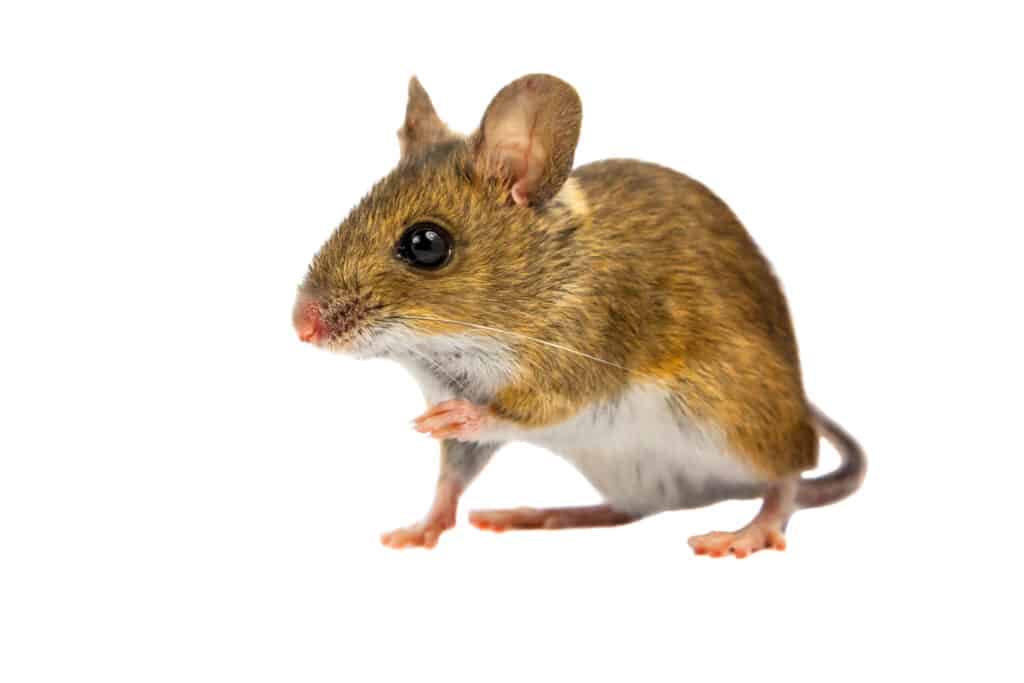
The wood mouse (pictured) is a very cute wild mouse that is very small.
©Rudmer Zwerver/Shutterstock.com
9. Common Dormouse
Species: Muscardinus avellanarius
The sole remaining member of the genus Muscardinus is the common dormouse, a little species of dormouse that is confined to Europe. Hedgerows and scrub are home to common dormice, although deciduous woods is where they are most often found. They are distinguished by their slightly large heads, rounded ears, and big dark eyes. These mice are just around six inches long, tail included. The average specimen won’t weigh more than one ounce. The fur of this little creature is reddish brown in color, although it can also be golden or nearly orange-brown and lightens toward the underside. The lengthy, hair-covered tail of this adorable species makes it unique.
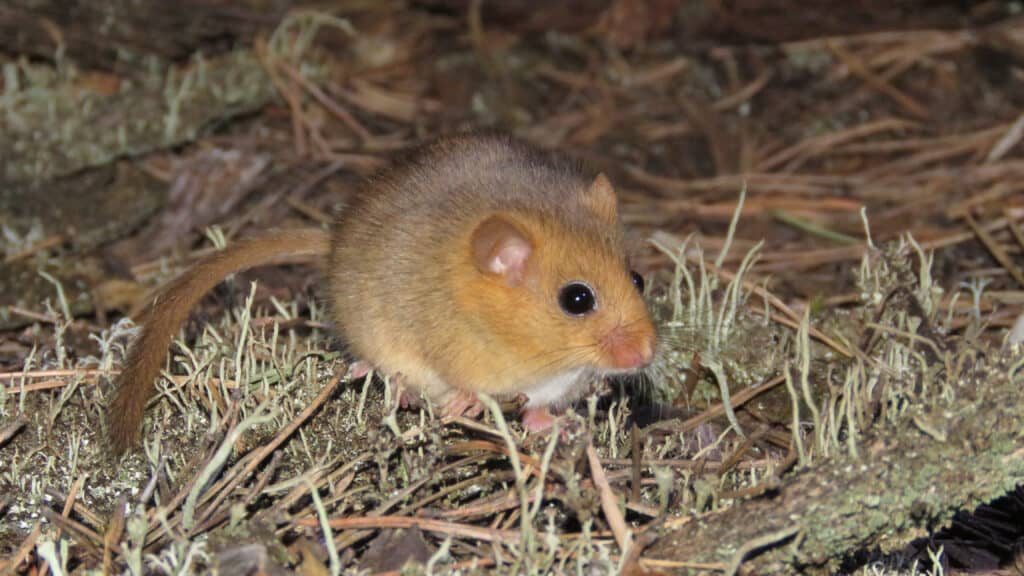
The common dormouse (pictured) is a European species that is loved for its larger head and big, adorable eyes.
©Oleksiy Sapuha/Shutterstock.com
10. Cotton Mouse
Species: Peromyscus gossypinus
The cotton mouse is a kind of rodent found in the United States South’s woods. It belongs to the Cricetidae family. With their tails included, these cute little wild mice may grow up to seven inches long yet only weigh around one and a half ounces. They have very cute white feet and bellies and dark brown bodies. The popular name for this mouse comes from its noted propensity for utilizing wild cotton to construct nests. It uses a range of habitats, such as marshes, dense woods, and more. Cotton mice seek protection from predators and wildfires by hiding underground, such as in burrows, tree cavities and stump holes.
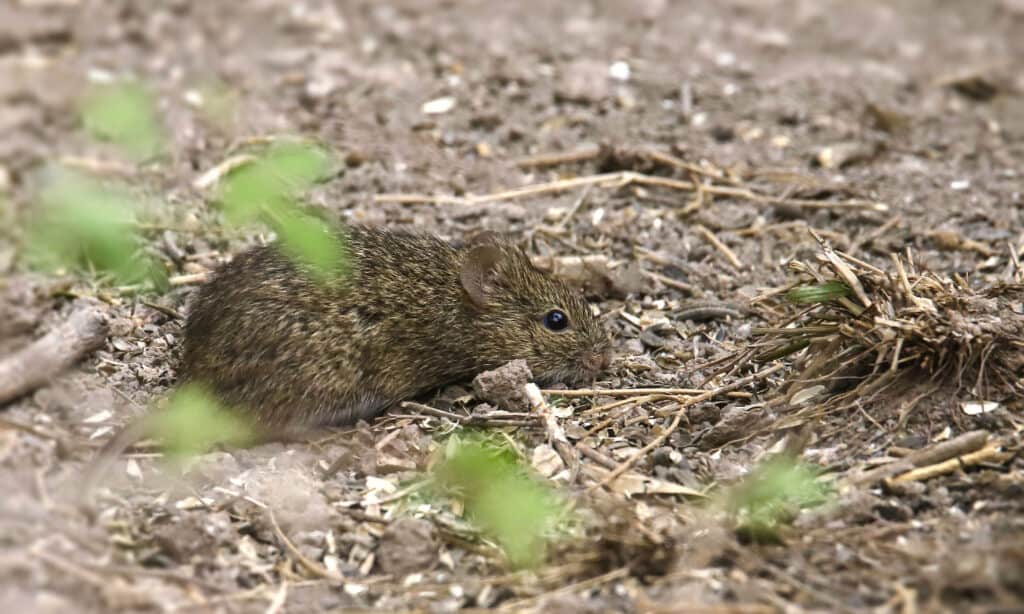
The cotton mouse (pictured) is common in the United States, though this adorable mouse is rarely kept as a pet.
©iStock.com/Nancy Strohm
How cute are all of these different types of mice? If you plan on owning a mouse as a pet, be sure to do your research ahead of time on cage size, care needs, and food.
The photo featured at the top of this post is © iStock.com/artisteer
Thank you for reading! Have some feedback for us? Contact the AZ Animals editorial team.






